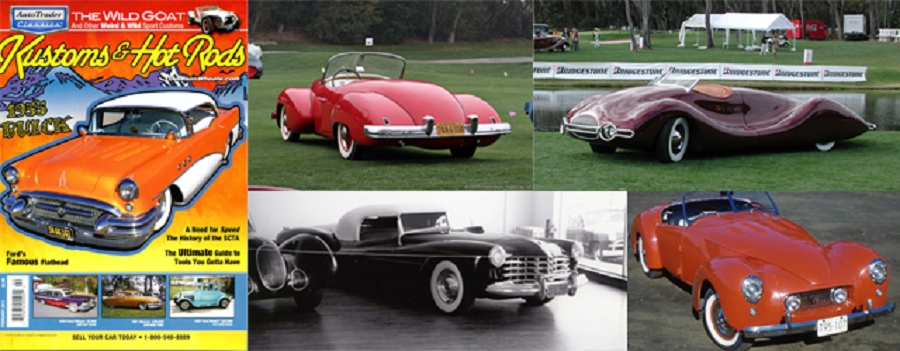
Note:
This is the second installment of a 2 part series of articles on John Gunnell and his recent article on “Sport Custom Cars of the Postwar Era.” Here is the link to part 1 of the story:
——————————–
Hi Gang…
In the Part 1 of this story, I introduced you to John Gunnell as well as the concept of “Sport Custom” cars. In this article, we’ll review John’s article and what he had to say about these cars. I used some of the pictures that appeared in his article in Part 1 of our story. For this part of the story, I’ll use additional pictures of Sport Custom Cars not originally in his article. Ready gang? On your mark, get set….Let’s go!
Kustoms & Hot Rods: February 2011 (by John Gunnell)
Sport Custom Cars of the Postwar Era:
Since the early days of custom cars and hot rods, there have been modified vehicles that were built to look like foreign sports cars, rather than like chopped and channeled versions of American cars. Back when Hot Rod had green-toned pages in the middle of the magazine, many cars of this type would show up in that “feature car” section.
They weren’t everyone’s cup of tea, but some hobbyists who took torches to cars in that era did find inspiration in Allards, Ferraris, Healeys, Jaguars and Triumphs from across the pond. Imported sports cars were all the rage. Even some American built cars like the Nash-Healey, Hudson Italia, Kaiser-Darrin, Chevrolet Corvette and Ford Thunderbird tried to tap into the sports car market. Smaller builders with big dreams and tiny factories turned out cars like entrepreneur Earl “Madman” Muntz’s swoopy Muntz-Jet, racing car manufacturer Frank Kurtis’ sexy Kurtis 500M and Bill Tritt’s stylish Glasspar G-2.
Sports Cars in Competition, a book published in 1952, defined a sports car of that era as, “A car that offers better than average pick-up through the gears, higher than average top speed for cubic inch displacement of its motor by comparison to others and better than average roadability under varying road conditions.” So sports cars, custom cars and hot rods had a lot in common.
Sports Cars in Competition also pointed out that sports cars evolved first in Europe and that the sports car hobby “infected” many GIs during World War II. When the American soldiers returned to the United States, sports cars gained popularity here. However, the fastest and best looking sports cars were often priced far beyond the means of many custom car and hot rod enthusiasts.
To solve this problem, talented enthusiasts started building powerful, one-of-a-kind customized roadsters, usually with bodies that were made from parts of other cars. Such cars showed up at least as early as 1946. That was the year that Renville Mordrow of Fond du Lac, Wisconsin started construction of his Renville roadster, which sold at the Atlantic City Classic Car Auction in 2008.
The Renville roadster was based on a modified 1932 Ford chassis with narrowed front and rear axles. Mordrow used a modified FoMoCo flathead V-8 – probably a Mercury version. The hopped-up mill was attached to a floor-shifted 1937 Lincoln-Zephyr gearbox. The car was fitted with full sports car-style foul weather equipment, including a canvas top and side curtains.
Joe Perrizo of Fond du Lac and Arden Hjelle of Oakfield, Wisconsin recall that Mordrow was a talented body man. They say he built from two to four homemade cars and that the one he did after the Renville was based on a cut-down 1955 Chevy. “It represented a Corvette and looked a lot like one,” Hjelle says. According to these men, the Renville roadster was probably completed in 1949.
Sports cars like the Renville roadster started to get some attention from historians and collectors in the late 1970s. Around that time, a man named Tim Hutchins, who lived in Iowa, started an organization called the Sport Custom Registry. In more recent years, Geoffrey Hacker, a College Professor based in Tampa Florida and an automotive historian, has started keeping track of “Forgotten Fiberglass” cars and even sport custom cars such as the Renville roadster.
Forgotten fiberglass cars and sport custom cars often had similarities, but the difference is in the way the body was constructed. The fiberglass-bodied vehicles include low-production cars like the Kaiser-Darrin and cars that were sold as kits, like the Woodill Wildfire, as well as one-of-a-kind “backyard” creations. A few backyard cars could be considered customs and/or hot rods. Sport custom cars are a little different. They have steel bodies, usually built from parts of other cars that are put together in a unique and different way.
An example of a sport custom is the Bestul, a sporty convertible built in the 1950s by Leonel “Lee” Bestul and his father, both of Iola, Wisconsin. Its flathead V-8, three-speed transmission and chassis came from a 1946 Ford, but the Bestul looks nothing like any car Ford ever built. It uses bumpers from a 1939 Dodge. Its grille comes from a late-1930s Plymouth. A 1937 Buick contributed its headlights. The instrument panel and controls came from a 1951 Ford, but 1950 Mercury gauges are fitted. Body panels from various cars were mixed and matched to handcraft the Bestul’s hood, fenders and body. The car resembles the limited-production Nash-Healey and is so nicely done it was once shown in Popular Mechanics magazine.
The Bestul was originally completed in 1956, when it had black paint and a hood scoop. It went through several changes over the years, including a coat of pink paint. In 1999, it was treated to its most recent transformation. All the pink paint and rust were removed. New doors and floorboards were fabricated, and the car was sprayed with bright white paint. An attractive red interior was installed. Later, a new convertible top was stitched up. Lee Bestul, a retired aircraft mechanic, recalls that he took the Bestul to a Ford factory in the 1950s and was scolded for driving “one of them foreign sports cars that’s hurting our business.”
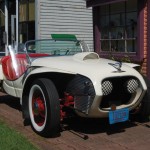
Called The “Wild Goat” By The Builders, The Plans For This Car Are For A Car Called The “Wild Hare.”
Like Bestul, customizers and hot rodders conceive car designs in their minds that they’d like to build, but taking a dream car from plan to reality is hard. Lee Bestul and his father had the skills needed to do this and created a sport custom car that not only looked good, but actually ran down the road. Other enthusiasts were capable of spinning wrenches to assemble a vehicle if someone else took care of the “drawing board” phase of the project. This led to what Professor Geoffrey Hacker calls the “Plan Car.”
A plan car is a sport custom car assembled by a home builder according to someone else’s plan. In many cases, the cars followed plans published in magazines such as Popular Mechanics, Mechanix Illustrated and Popular Science. A good example is the “Wild Hare” sports car that appeared on the cover of the 1962 edition of Science and Mechanics, an annual publication.
“36 Best Buys in Surplus and Salvage Projects” says the main cover blurb on the 75-cent magazine. At the bottom of the page, it reads, “Wild Hare Sports Car Yours for $300.” The how-to-do-it article by Joe McBride – with photos by Joel Dardis – starts out, “Rivaling a European sports car in appearance but built from junk-yard ‘goodies,’ the Wild Hare has that ageless – hard to date – classic car look.” The car was designed around any 1939-1948 Ford or Mercury chassis. Parts from a variety of old cars were specified for fabricating the body, including: front fenders from a 1939 Ford or Merc, a 1938-39 Chevy roof for the top of the hood, a similar roof for the panel below the grille, a Chevy rear fender for a hood scoop, a GM trunk lid for the rear deck, 1938-39 Chevy doors for body sides, 1939 Ford bumpers, Pontiac taillights and a Model A Ford windshield. Very elaborate technical drawings showing top and side elevations of the chassis and body, as well as construction details, were included with the article. The 9-page article “covered all the bases” from installing instruments to making hubcaps.
Although the circulation numbers for Science and Mechanics magazine are lost to history, Geoff Hacker has documented that at least three of the cars remain and two of those are in Wisconsin. For unknown reasons, one of the Wisconsin cars has always been known as the “Wild Goat,” and it belongs to the Fond du Lac Historical Society, a group that stores the vehicle at its Galloway House & Village historical site. About two years ago, curator Robert Kovacs began blowing the dust off the car before tracking down three of its original builders to shine it up and get it running again.
The Wild Goat was built in the auto shop at Goodrich High School, in Fond du Lac, in 1962, under the supervision of instructor Lynn G. Topliss. It rides a shortened 1946 Ford chassis and has a 93-inch wheelbase with a 140-inch overall length. The car stands 47.5 inches high. Under the hood – fabricated from 1936 Chevy sheet metal – is a 1951 Mercury flathead V-8 with genuine Edlebrock cylinder heads and a single two-barrel carb. The hood is from a 1937 Chevy, the front fenders are from a 1939 Ford, a 1946 Pontiac donated its rear deck and the red bucket seats were yanked from an Austin-Healey. The 1939 Ford “artillery” wheels carry gangster whitewall tires. Kovacs mentions a top speed of 100 mph (but he won’t say how he tested the car to go that fast).
Lynn Topliss always had his students working on projects, and when they completed one, he found another one. Kovacs saw the article about the Wild Hare in Science and Mechanics magazine and decided to make it the next class project. He and his students put the car together without spending a cent of the high school’s money. The students went to salvage yards to get some needed components. Other parts came from families and friends or via donations.
Kovacs, a member of the Fond du Lac Historical Society’s board, told us that he’s identified parts from over seven cars on the Wild Goat. “The rearview mirror is from a Studebaker Commander,” he points out. “The hood is from a Chevy, the rear deck is from a ’46 Pontiac. It has Ford front fenders and a Ford frame, but the rear fenders are from a Chevy.”
Kovacs has traced down three of the students who helped build the car – Gary Buelow, Bob Huberty and Dick Freund. They told him some good stories about the car. “One thing I found out from them was that the springs on the front nerf bars were scavenged from a boiler taken out of Goodrich High School in 1962,” Kovacs reveals. “Also, the red railings on the sides of the cockpit are actually lengths of hose from a fire station on Second Street in Fond du Lac.”
Kovacs figured out that the car’s clear plastic steering wheel rim was made by Topliss to replace the wooden rim of a “Fatman” steering wheel that had a 1912 patent date. Fatman steering wheels were a Model T era aftermarket accessory made by a company named Neville. They were used on many different types of cars. At the center, they have a large screw that holds a sliding mechanism that moves the wheel out of the driver’s way for entry and exit.
Topliss replaced the wooden rim with the clear plastic one made from a coat hanger rod. He cut out a round plywood disc of the proper diameter. Then, he took the coat hanger rod to a local bakery with a large oven. Topliss warmed up the rod in the oven, then shaped it around the plywood disc until he had precisely the diameter that he needed to fit it back on the steering wheel spokes.
Finishing the car took two years, which amounted to 180 days of actual work in the Goodrich High School shop, plus weekends, holidays and time for painting and other details. Jim Glassel, vice president of the Fond du Lac Historical Society, said that the workshop where the car was built was in the front part of the old building erected in the 1920s. Today, the building houses the Riverside Elementary School, and a theatre stands where the shop was.
We asked Bob Kovacs if the students thought they were building a hot rod or a custom car or something else. “Two out of the three men are still involved in automotive work, and Dick Freund’s son is a restorer and hot rod builder, so I know that building this car had an impact on them,” Kovacs says. “I don’t know exactly what their thoughts were, but I’m sure that they thought they were making a hot rod and they all wanted to run it.”
Lynn G. Topliss was the only person to own the Wild Goat. He maintained possession of it because he personally financed the project. If something was needed to build the car and Topliss or the students couldn’t get it for free, he bought it. Occasionally, local residents might see the car in a parade or spot it when Topliss went out for a ride, which was rare. He had other collector cars.
Two of his former students tried to buy the car before Topliss donated to the Fond du Lac Historical Society. One was from California and the other from somewhere else, but he wouldn’t sell it to anyone for fear of making the other students, who had been involved in the project, angry. Instead, he took it to the Historical Society’s Galloway House & Village, drove it into the back of the Blakely Museum building there, shut it off, took the key and went home. “All of you can go out to the museum if you want to see it,” Topliss reportedly said.
Glassel says that Topliss never gave the car’s keys to the Fond du Lac Historical Society. When the car was taken out of mothballs, the former students who helped to get it going again had to re-key it. They also installed an electric fuel pump. Otherwise, the car is unchanged from 1986. Kovacs has a lawn care business that has “adopted” the car to help out with the jobs of keeping it up and running, showing it off at area events and educating the public about it.
Although sport custom cars like the Renville, Bestul and Wild Hare/Wild Goat are not fiberglass cars, historian and researcher Geoffrey R. Hacker is the best place to seek information about these “non-mainstream” vehicles. He can be reached through the Forgotten Fiberglass Website: www.forgottenfiberglass.com.
Summary:
John did a masterful job of describing these cars and sharing his interest in his article. He was also very knd at recognizing our efforts here at Forgotten Fiberglass (thanks John!) There are only two other articles in the past 60 years that I’m aware of that covered “Sport Custom Cars,” and we’ll review those articles in coming months. By the way, John Gunnell’s article is also posted on the internet on the following website: Click here to review John Gunnell’s article on Sport Customs. Be sure to check it out if you would like to see more pictures.
Thanks again to John Gunnell for such a great job describing these cars to all of us.
Hope you enjoyed the story, and until next time…
Glass on gang…
Geoff
——————————————————————–
Click on the Images Below to View Larger Pictures
——————————————————————-
- 1947 Kurtis Omohundro Comet at Amelia Island Concours d’Elegance in 2009
- 1948 Norman Timbs Special Shown Here At Ameila Island Concours d’Elegance in 2010.
- Vintage Picture of 1950 Fitzpatrick Sports Custom
- Vintage Picture of 1947 (Gerry) Huth Custom Cadillac.
- Called The “Wild Goat” By The Builders, The Plans For This Car Are For A Car Called The “Wild Hare.”
- Here’s The Alpha Centari – Build By Dick Feeney In The Late 1950’s.
- 1953 Bohman Special Built By Chris Bohman in 1953 And Used In The 1954 Movie “Johnny Dark.”
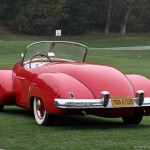
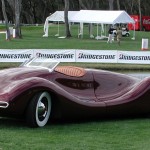
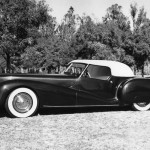
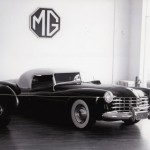
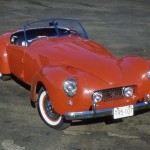
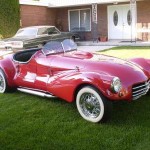

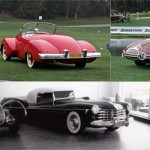
I recall the Wild Hare Article which was in the September 1961 Issue of Science and Mechanics, a monthly publication. I believe I still have my copy although the beautiful cover featuring the car is sadly missing.
I own the Wildhare in your artical.
hello drennon, that’s interesting you said that you own the “wildhare” in the article. I would like to talk with you about that for the Historical Society. You can respond to my email at kovacsllc@gmail.com.